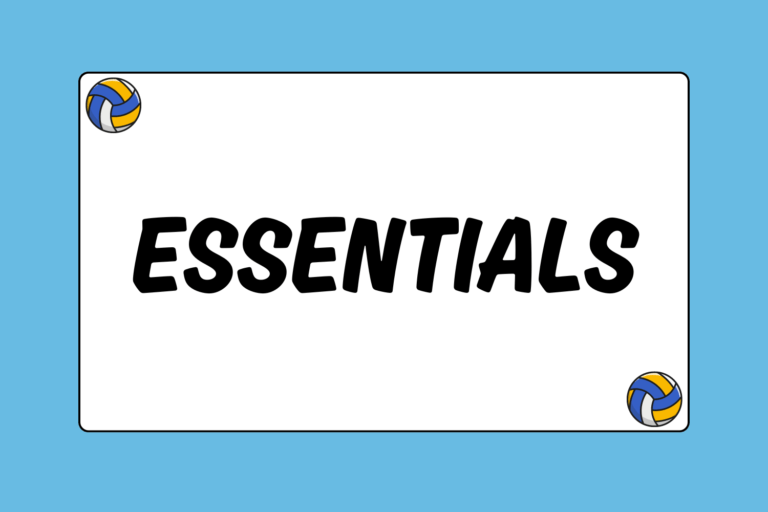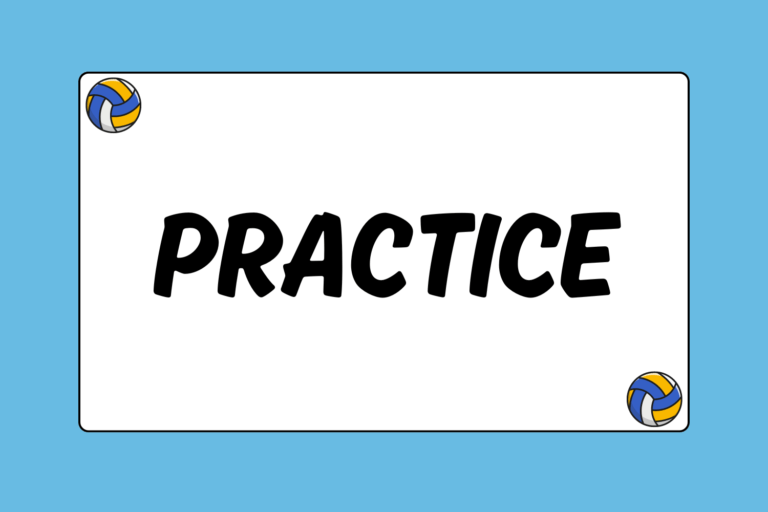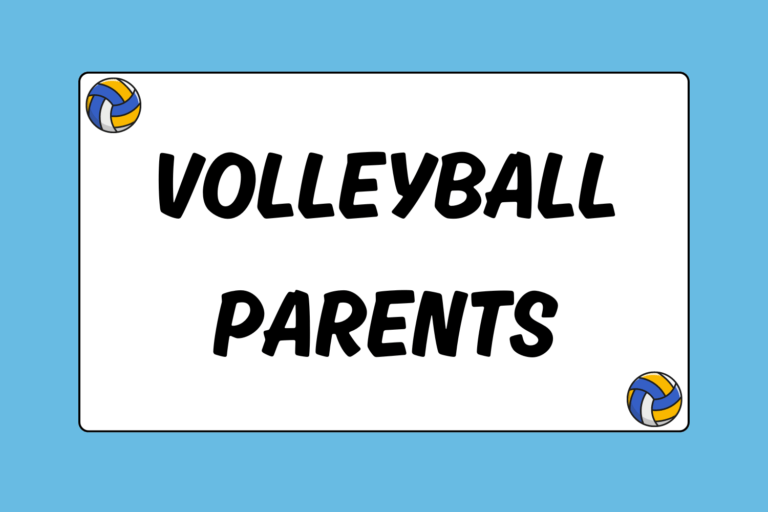Early volleyball games were not regulated by court specifications. The modern game however, operates under strict court regulations.
Indoor volleyball is played on a rectangular court measuring 18 x 9 meters. Official volleyball rules mandate that the court be surrounded by a 3m wide area called the “free zone.” Players may enter and play within the free zone after the ball is legally contacted for a serve but not before.
Additionally, the area above the playing area must be free from any obstructions.
Lines on the Court
The court is divided in half by the center line and an elevated net. Within each half, lines are marked to designate various zones on the court.
All lines denoting the boundaries and various zones within the court are marked within the dimensions of that area and are therefore considered a part of the court or respective zone. In practice this means that if a ball hits the sideline or endline it will be called “in” because the lines are considered a part of the court. This principle applies to all the area/zones on the court. Below is a breakdown of the lines found on a regulation volleyball court.
- Boundary lines: Two sidelines (18m each) and two end lines (9m each) mark the court boundaries. If any part of the ball hits one of the boundary lines the ball is called in-bounds.
- Attack line: The attack line (also called the 3-meter line or 10-foot line) is marked on each half of the court. It extends from sideline to sideline and is marked 3 meters back from the center line.
- Center line: This line extends from sideline to sideline and divides the court into two equal sections (9 x 9m). Players are not allowed to cross over the center line into the opposing team’s playing area; doing so is a violation and results in a loss rally.
Court Zones
The volleyball court is divided into numerous zones, each with specific rules regarding the legality of play.
- Front zone: This is the area between the center line and the attack line. Only front row players may jump and attack a ball in the front zone.
- Service zone: The service zone is the area behind the end line. It is 9m wide (the length of the end line) and extends into the end of the free zone. A server must begin the serving motion while inside the service zone.
- Substitution zone: A player becomes an eligible substitute once he/she enters the substitution zone.
- Libero replacement zone: The libero replacement zone extends from the attack line to the end line. A libero must enter the game within the limitations of the libero replacement zone. Failure to do so is a delay of game violation and could result in a loss of rally penalty.
Equipment
- The ball: A regulation volleyball must be spherical and made of a flexible leather or synthetic leather case. The ball should measure between 65-67cm (circumference) and weigh between 260-280 grams.
- Net: An elevated net is placed over the center line at a height of 2.43m for men and 2.42m for women. The net is 1.0m wide and 9.5-10m long.
- Antennae: Antennas—flexible plastic rods that measure 1.8m long and 10mm in diameter—are fastened to the outer edge of each side of the net. The antennas are considered part of the net and limit lateral net play; a ball that touches an antenna or enters the court outside of the antenna is considered out of bounds.
- Posts/Net supports: The posts used to support the net shall be placed 0.50-1.00 meters outside the sidelines. The net supports must be equipped with padding to cover the posts.





